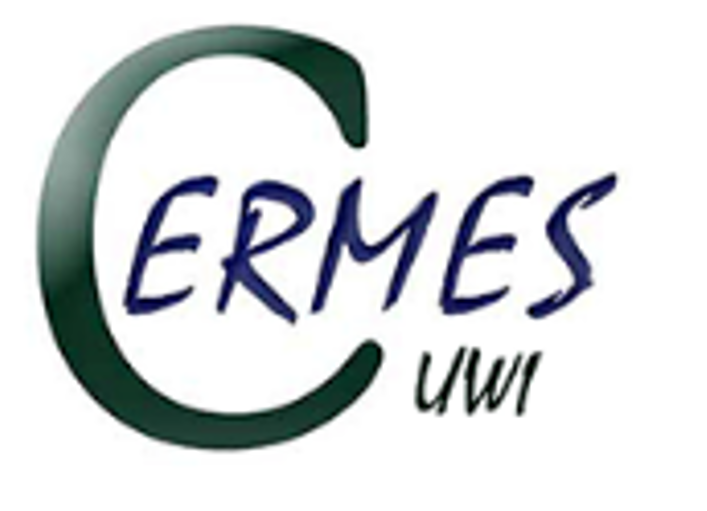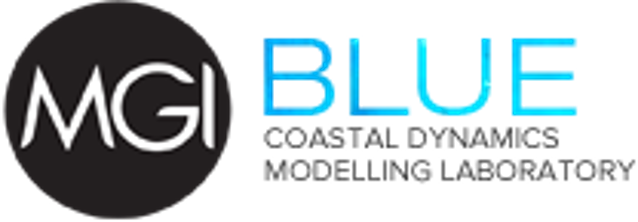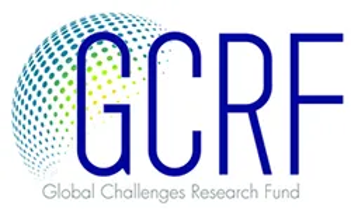“SARTRAC LEGACY IN JAMAICA: Jamaican Sargassum Early Advisory System"
“SARTRAC LEGACY IN JAMAICA:
Jamaican Sargassum Early Advisory System (JSEAS) Launch, Fieldtrips and opportunities for future research”
On Tuesday, the 9th of January 2024, SARTRAC team members met in Kingston, Jamaica: Professor Jadu Dash (University of Southampton), Dr. Abigail Uribe-Martinez (National Autonomous University of Mexico (UNAM)) and Mr. Mawuli Gbekor (Environmental Protection Agency (EPA), Ghana). The Mona GeoInformatics Institute (MGI) welcomed fellow SARTRAC visitors to Jamaica for the first time during the project after having developed several innovative methods of assessing and monitoring Sargassum severity along Jamaica’s coastline since the project’s inception in 2019. MGI’s activities culminated in the production of the first Early Advisory System which predicts Sargassum beaching events and accounts for subsequent impacts on stakeholders at a community level. As Sargassum inundation continues to impact marginalized populations in developing countries across the world, the trip presented an opportunity for MGI to launch their Early Advisory System and to enhance South-South cooperation and South-South Knowledge Exchange across Jamaican, African and Mexican boundaries. Here is how the trip unfolded.
Tuesday 9 January: Knowledge Transfer and Legacy Sessions at MGI’s conference room
Session 1:
After greetings with smiles as bright as the Jamaican sun, it was time for the first session on the agenda at MGI’s office located at the University of the West Indies, Mona. The initial session involved an engaging discussion focusing on several issues and progress made in advancing Sargassum research within the respective institutions. MGI notably shared the extensive work they have done towards the development of the Jamaican Sargassum Early Advisory System (JSEAS) including continuous field monitoring and validation activities across several monitoring sites along Jamaica’s coastline, hydrometeorological and socioeconomic modelling, social data collection, system development and the establishment of an extensive 5-year database of beached and floating Sargassum data. Abigail highlighted her work at UNAM focusing on detecting floating Sargassum mats through remote sensing, an improvement of resolution when compared to other methods and available datasets. Abigail also shared important lessons from Mexico’s perspective of the numerous Early Advisory Systems developed for her country being met with discontent due to a general inability to make meaningful contributions to stakeholders. She alluded to the innovations of JSEAS being well appreciated especially those around beaching prediction and incorporating impacts on different stakeholders. Mawuli provided updates on the progress made in replicating activities by MGI in Ghana towards the development of a similar system in his country. He shared progress in assessing Sargassum severity as well as continuous monitoring efforts by the EPA in Ghana. Jadu concluded that there were several opportunities for South-South Knowledge Exchange across institutions and that there was an important need for future collaboration to enhance Sargassum research efforts. Jadu emphasized the potential transfer of JSEAS to Mexico and Ghana as being an important step in alleviating the precarity faced by stakeholders in those countries arising from Sargassum inundation.
Session 2:
After a heavy Jamaican lunch, the team met with the Manager of the Ecosystems Management Branch of the National Environmental and Planning Agency (NEPA), Ms. Monique Curtis, to discuss national issues around Sargassum management, how SARTRAC activities could assist with these challenges and the legacy of JSEAS. Discussions started with Mr. Romario Anderson, Research Officer at MGI, demonstrating the progress made by MGI in Sargassum monitoring and key functions of JSEAS inclusive of its monthly ability to:
- Predict where Sargassum is offshore and nearshore
- Determine the risk level of sargassum beaching in a community
- Provide alerts for specific communities and incorporate the impact on specific stakeholders
Ms. Curtis highlighted the importance of several functions of JSEAS to key stakeholders, especially the value towards preparation and guiding cleanup efforts. She alluded to the potential use of the system for environmental management purposes should the system be expanded to consider protected areas and other coastal management initiatives. Ms. Curtis went on to highlight NEPA’s role in managing Sargassum as being the lead government agency with the mandate for environmental protection, natural resource management, land use and spatial planning in Jamaica. Ms. Curtis shared the agency’s role in Sargassum monitoring across Jamaica and the practical use of rapid assessment forms in their annual monitoring given resource constraints to conduct island wide volume estimations. Ms. Curtis appreciated the ongoing collaboration with MGI which included training and a joint initiative to improve on the Sargassum rapid assessment form. Jadu and Ms. Curtis were in agreement that future discussions were necessary in order to ensure that the legacy of JSEAS is kept between SARTRAC team and NEPA noting the potential value in providing long-term support for the system. Ms. Curtis invited the MGI team to meet with the NEPA personnel responsible for Sargassum to present JSEAS.

Figure 1. Team picture after a day of abundant Sargassum discussions! From left: Ms. Monique Curtis (NEPA), Mr. Luke Buchanan (MGI), Professor Jadu Dash (University of Southampton), Dr. Abigail Uribe-Martinez (National Autonomous University of Mexico, Ms. Kayvia Harriott (MGI), Mr. Romario Anderson (MGI), Mr. Darren Fletcher (MGI), Mr. Mawuli Gbekor (EPA Ghana) and Ms. Kaodi McGaw (MGI).
Wednesday 10 January: Field trip to eastern monitoring sites
On the second day of activities, the SARTRAC team headed towards Sargassum monitoring sites located on the eastern coast of the island to engage in monitoring methods utilized by MGI and to observe issues arising from Sargassum inundation. The 400km round-trip took the team through a dynamic terrain of dry limestone forest in Kingston to wet limestone broad-leafed forests in the north, through urban and rural communities with vibrant culture on display and of course by multiple Sargassum beaching hotspots! The 4-hour long bus ride was filled with cheer and various discussions on several issues affecting the island. Mr. Luke Buchanan (Executive Director, MGI) notably engaged the team on the critical issue of pollution in the Kingston Harbour. He updated the team on the work MGI has been doing with the Ocean Cleanup to stem the flow of plastic from gullies into the harbour by establishing barriers at several of the gully mouths situated along the harbour’s coastline.
The first stop on the trip was in Manchioneal, Portland. The rustic community is home to a traditional fishing village where over one hundred (100) fishermen have been practising their trade for several decades. However, since 2014, the livelihoods of these fishermen have been threatened by the massive influxes of Sargassum experienced annually.
Upon reaching the site Romario, Jadu and Darren immediately noticed a receding shoreline on the beach. The trio engaged in discussions on the issue of beach erosion and its possible relationship with high volumes of Sargassum beaching. This emerging issue has been seen across several monitoring sites in Jamaica by the MGI team. Romario, Jadu and local fisherman, “Sipple” were actively preoccupied in discourse about several issues and opportunities which Sargassum inundation has presented to the fishing village. Sipple, who has been integral to several activities of SARTRAC and MONISARG, expressed the fishing community’s interest in assisting with research where needed. Sipple notably highlighted that the fishing village would be accommodating to research initiatives such as setting up a beach monitoring camera which would allow for remote monitoring of the beach erosion and Sargassum inundation. The team recorded details of Sargassum on the beach using the electronic rapid assessment form jointly developed by MGI and NEPA.

Figure 2. SARTRAC team and local fisherman take the time out to pose for a picture after engaging in discussion on Sargassum issues in Manchioneal, Portland, Jamaica.
Kensington:
The second stop in the beautiful community of Kensington demonstrates the threat that Sargassum presents to eco-tourism initiatives, a key element of Jamaican tourism. The monitoring site is home to a sandy beach nestled in a secluded cove which is nourished by a river flowing through to the Caribbean Sea. Kensington had been a popular recreational site until the arrival of Sargassum and associated pollution. Despite high winds and possible rainfall, Romario, Darren and Kimoy-Marie skillfully demonstrated the biogeographic methods utilized for Sargassum volume estimation and drone flight captures to the visiting team.
Long Bay:
The third stop of the trip brought the team to Long Bay, Portland which serves as a popular spot for tourists with several restaurants situated at the site serving up fresh catch from the Caribbean Sea. At this spot, the team observed several large mats of floating Sargassum nearshore. The team performed a rapid assessment of the site and proceeded to lunch.

Figure 3. Darren, Jadu and Mawuli engaged in discussion on Sargassum monitoring initiatives in Ghana and Jamaica at Long Bay, Portland.
Robin’s Bay:
With bellies filled with Jamaican jerk, the team headed off to their final stop situated in the popular tourism community of Robin’s Bay, Saint Mary. The monitoring site is home to the popular Strawberry Fields Hotel. Jadu noted that the site would be another prime location to explore the establishment of a monitoring camera.
Thursday 11 January: JSEAS launch day
Having made a quick recovery, the team was prepared for action as it was time for the big event, the JSEAS launch! The launch event, held at the Courtleigh Hotel, provided an opportunity for stakeholders at all levels to learn about the system developed by MGI and provided engagement with the research team on several pertinent Sargassum issues. The event was well attended by representatives across a diverse group of stakeholder categories inclusive of fishing, environmental, tourism, transformational entrepreneurs, The European Union, environmental NGO’s, development planning and national media houses.
The event started off with greetings and welcome by Mr. Luke Buchanan and proceeded with several engaging presentations. The first presentation was from NEPA with Ms. Monique Curtis who showcased the challenges of Sargassum for Jamaica notably mentioning the economic cost inflicted through disruption of services and those associated with cleanup efforts. Her presentation also demonstrated that the agency had made significant progress in the development of cleanup guidelines for the removal of Sargassum from beaches. The next presentation was from Jadu, who shared experiences from SARTRAC and affiliated projects. Jadu notably highlighted several successes relating to Sargassum including the development of JSEAS, a long-range forecasting system, biochemical analyses, remote sensing algorithms and citizen science initiatives. Mawuli was the next presenter and during his presentation, he demonstrated Ghana’s experience in combatting Sargassum including the development of a National Invasive Species Strategy and Action Plan (NISSAP), ongoing monitoring, citizen science initiatives and the Sargassum severity assessment. Abigail subsequently presented on her work done in Mexico including innovations around satellite detection, monitoring utilizing fixed cameras and capacity building. Romario then concluded presentations by highlighting the work done towards developing JSEAS and demonstrating its functions to stakeholders through a live demo of the website . Darren made closing remarks subsequently followed a Q and A segment where several questions were posed to the presenters at the launch event. After the event, the research team was engaged with the media and h aired on Jamaica’s national radio and television channels. During the radio interview, Jadu and Romario shared information on the SARTRAC project and explained how stakeholders could benefit from JSEAS. Television coverage showcased several events of the launch event and emphasized the importance of JSEAS to stakeholders.

Figure 4. Presenters engaged with audience for Q&A. Presenters engage with the audience during the Q and A segment at JSEAS launch held at the Courtleigh Hotel
Friday 12 January: The way forward
Before we knew it, it was time for the final day together as a team- many fond memories made and significant progress ascertained towards strengthened Jamaica-Mexico-Ghana-UK collaboration. The final day was spent going over steps towards the transferability of JSEAS for Mexican and Ghanaian coastlines. The team was also actively engaged in conversations around remote sensing, carbon sequestration and other pressing problems affecting the various regions beyond Sargassum. The trip was not just one that improved an understanding of Sargassum dynamics and research skills but one which emphasized the important role south-south cooperation plays in contributing to an improved understanding of complex problems affecting the global south. A foundation was set for continued collaboration on Sargassum issues beyond the SARTRAC project.
As MGI says goodbye to our travelling colleagues, let it be a 'see you later,' for our connections run deeper than the conclusion of this project; they pave the way for future collaborations, enriched by the knowledge gained and friendships formed.

Figure 5. The team poses together for a final picture outside MGI's office. The team poses for a final picture together outside MGI's office








